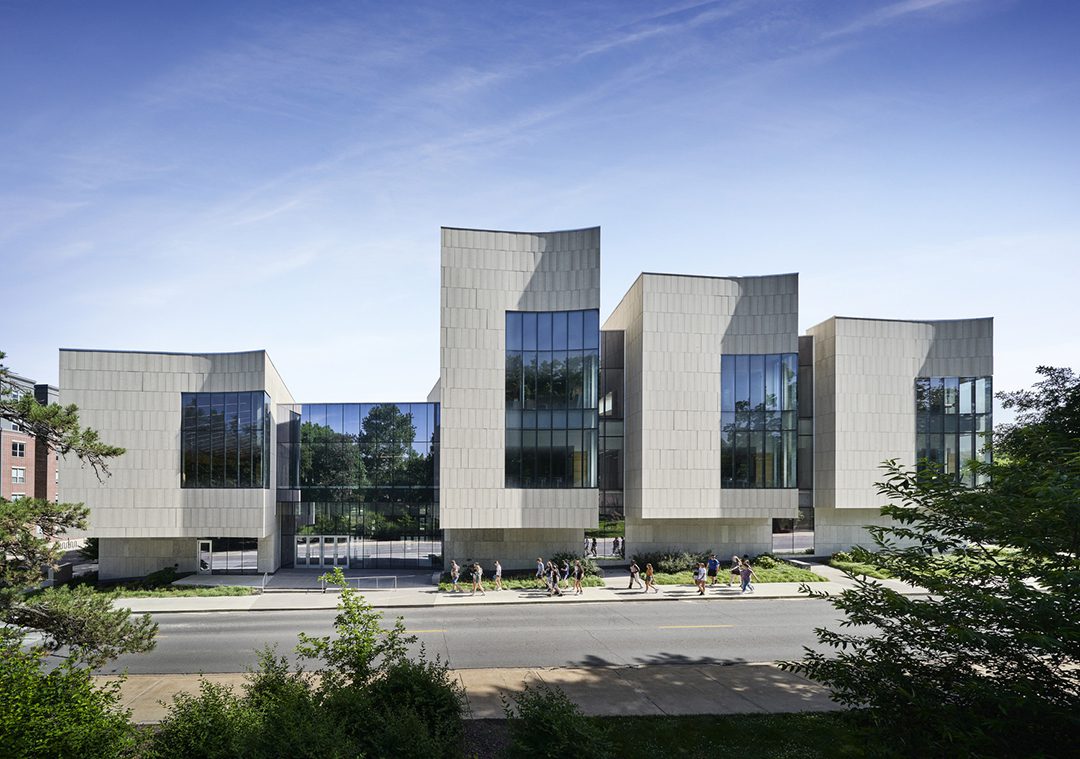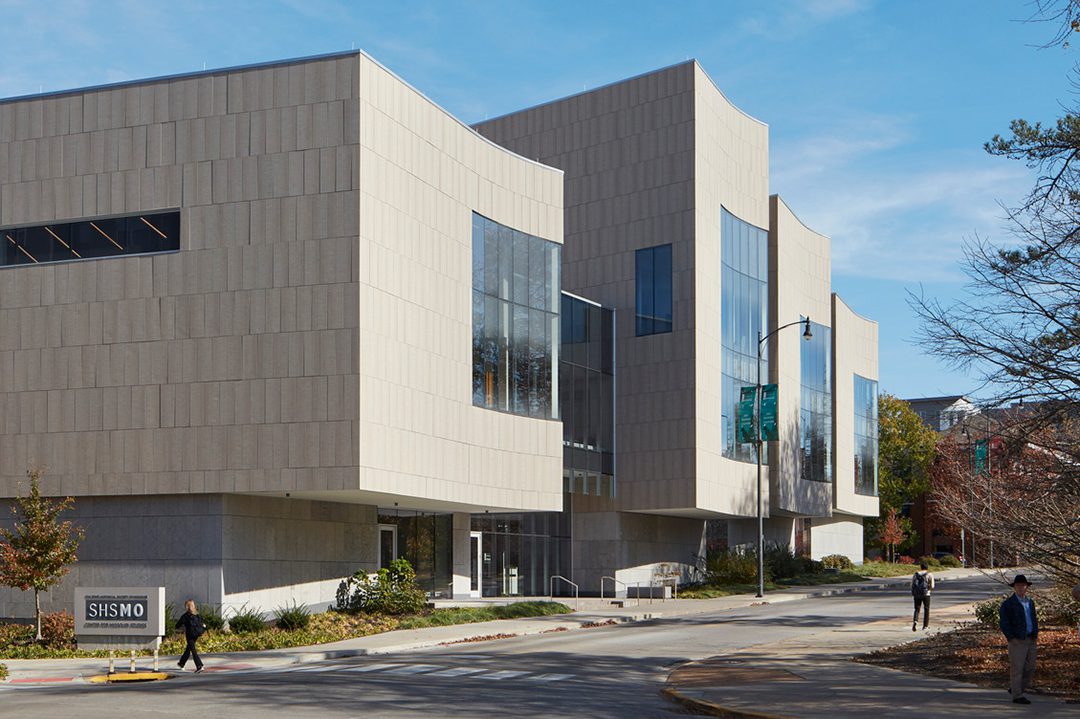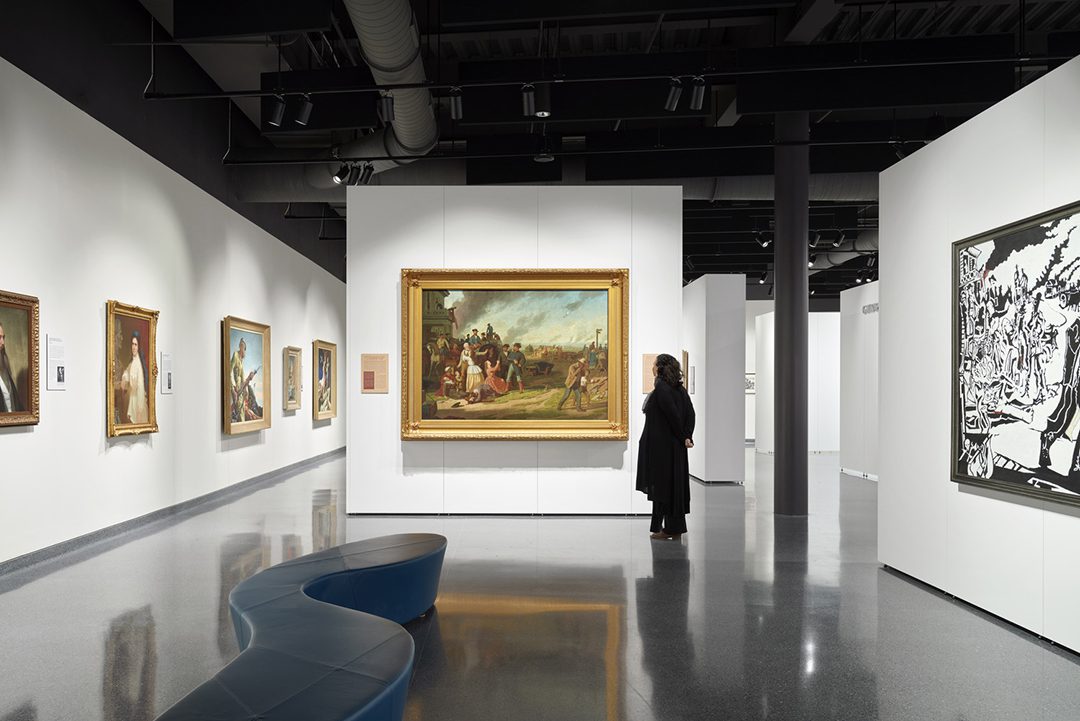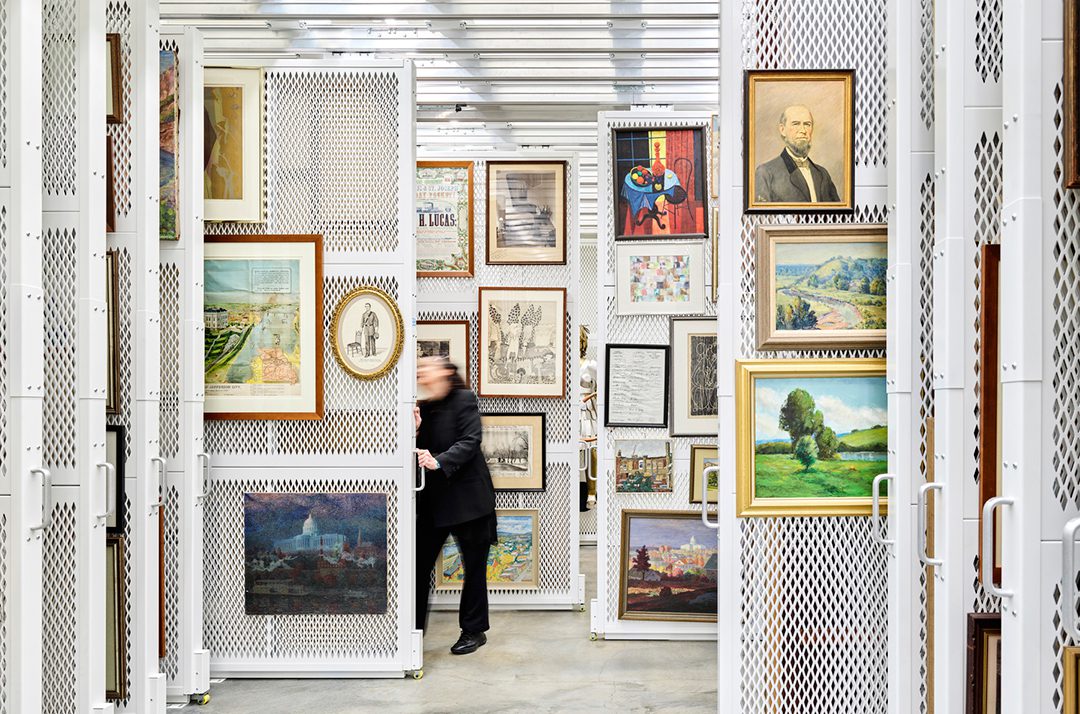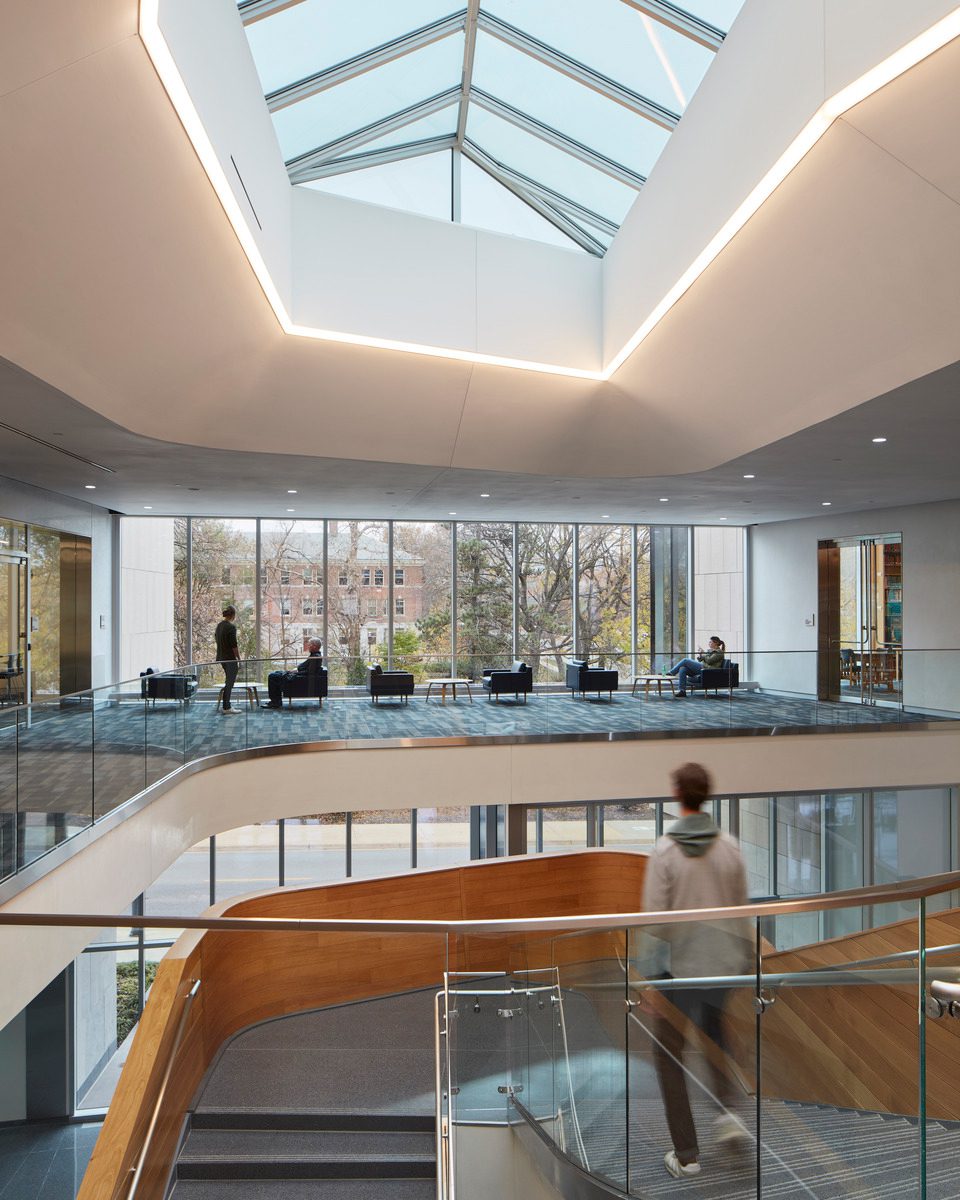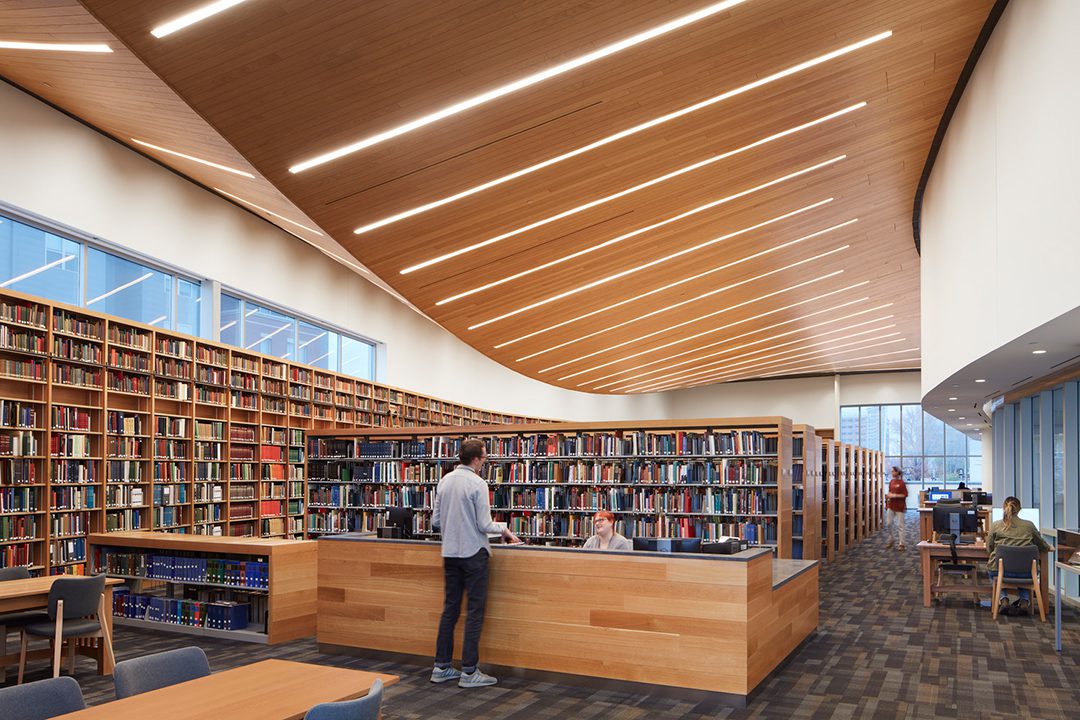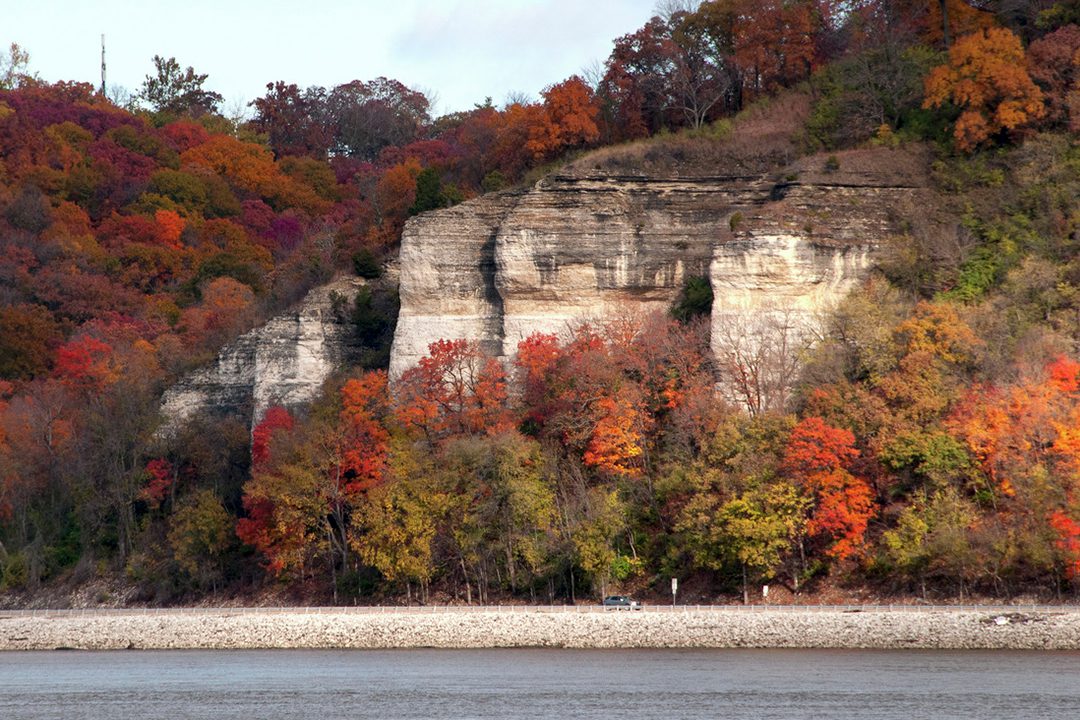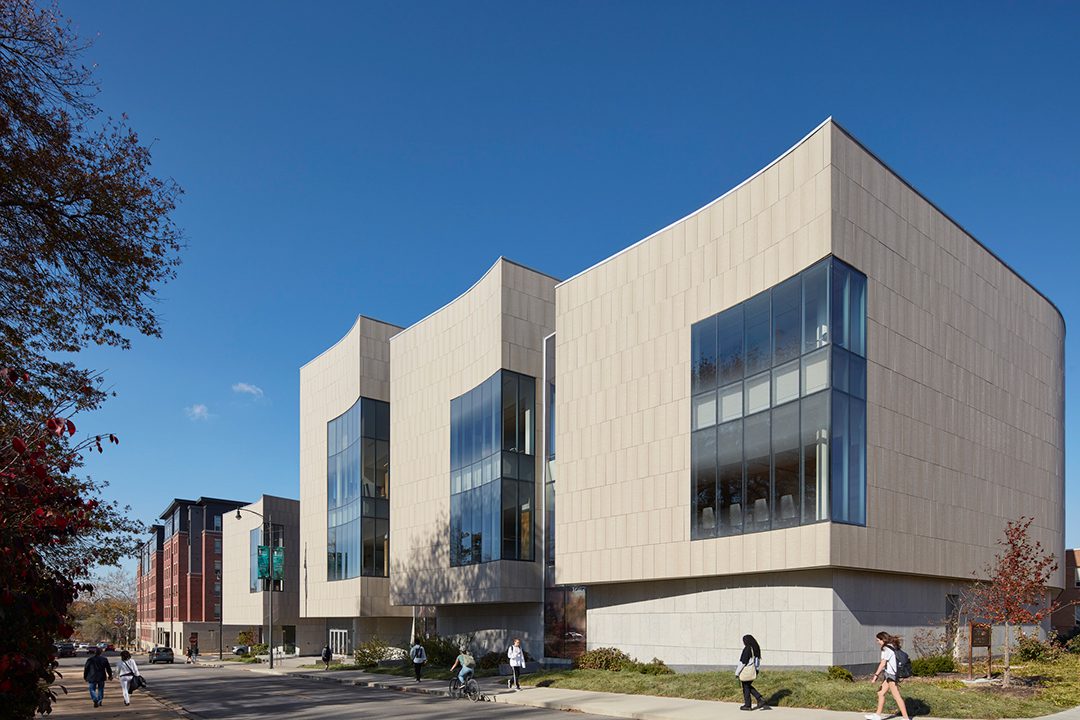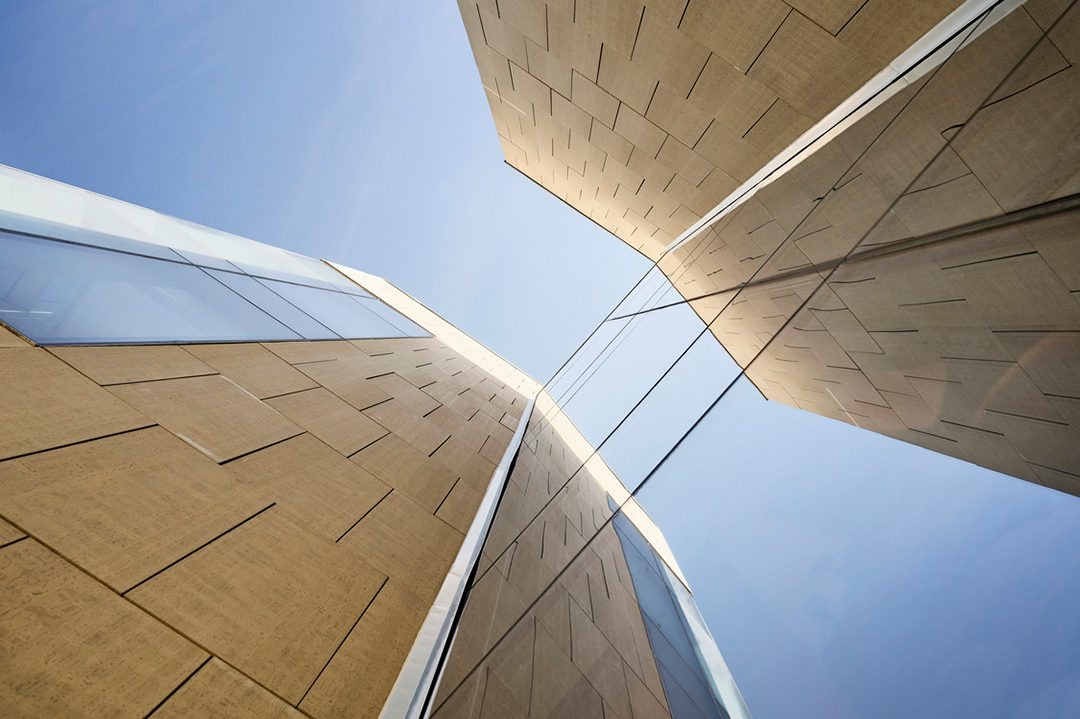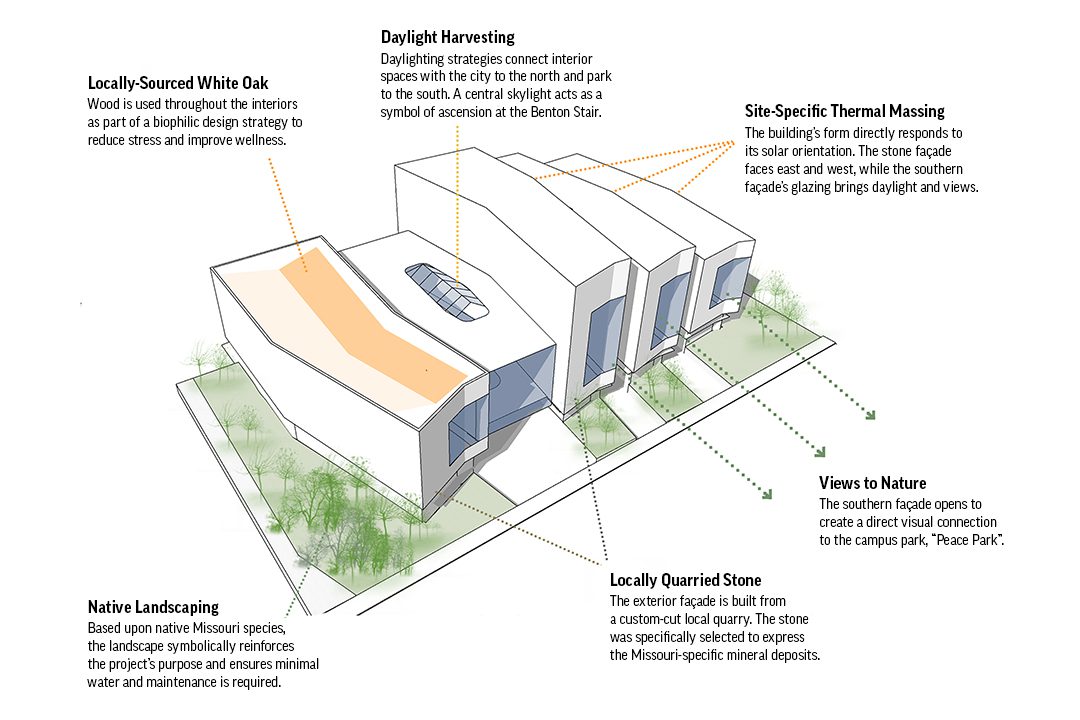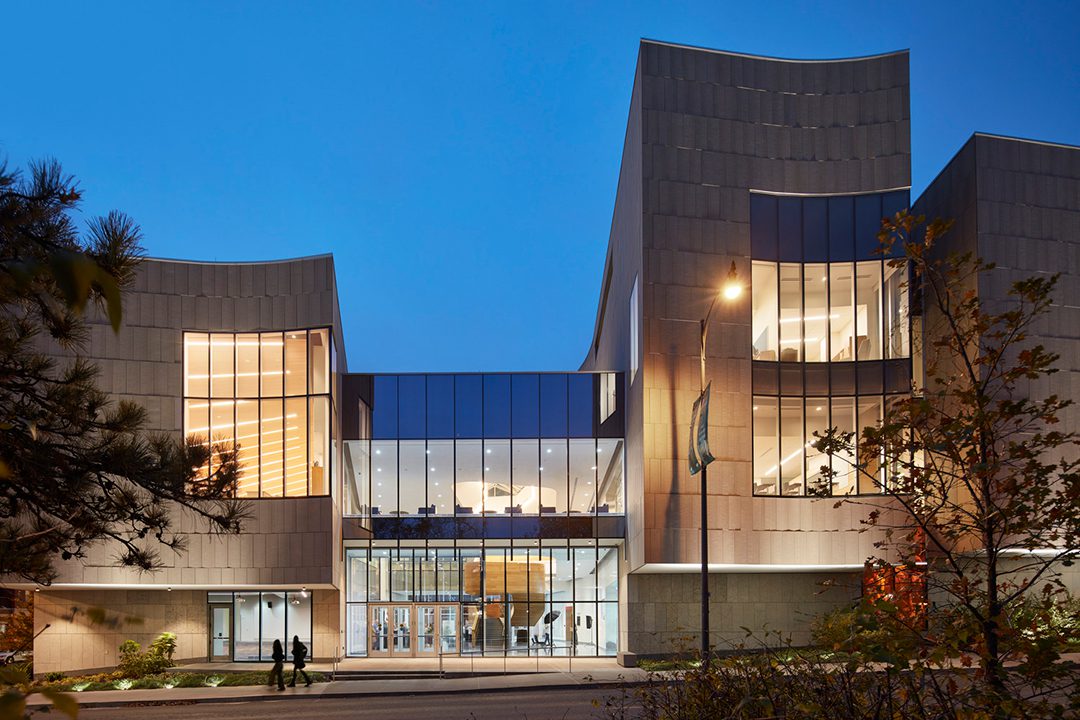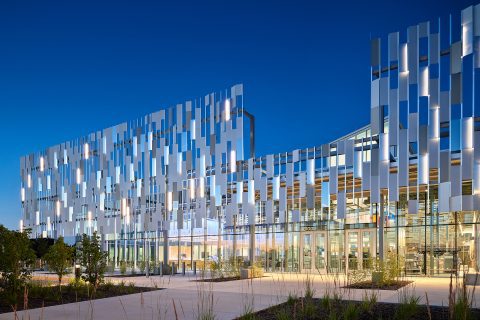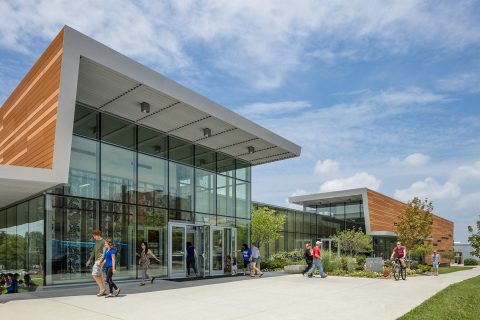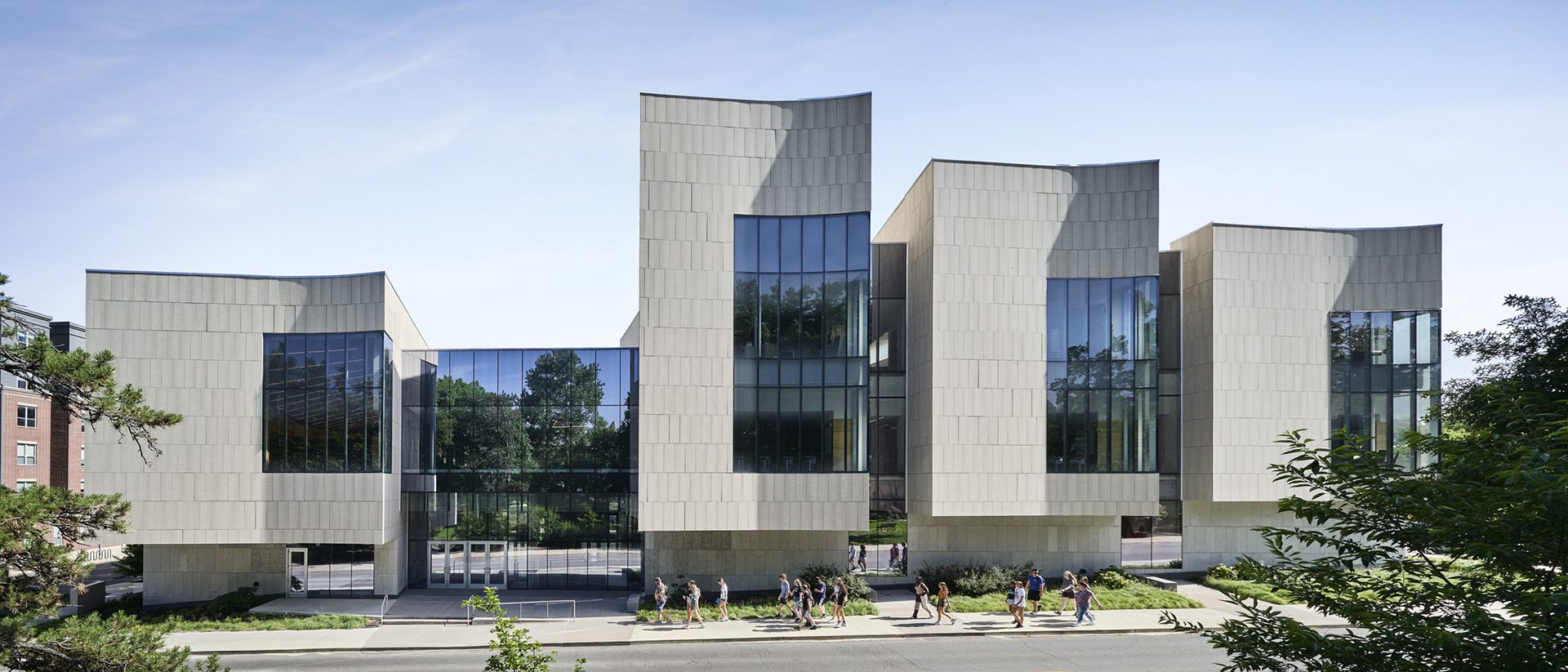
SHSMO’s Center for Missouri Studies
A confluence of rivers inspires a library to become a mixed media, multi‑venue experience for the state of Missouri.
The State Historical Society of Missouri (SHSMO) was founded in 1898 and has been operating for 125 years. Having outgrown its existing library and office space, SHSMO was in need of a new headquarters that would represent the richness of what it offers to the community. Tasked with marrying the missions of three distinctive institutions—the historical society, the University of Missouri, and the state of Missouri—into one cohesive headquarters, the new Center for Missouri Studies celebrates and offers a venue to provide a new lens for scholars, students, and visitors to understand our world today.
Previously headquartered in the outdated basement of the Ellis Library building on the University of Missouri Campus and grappling with a muddled message, SHSMO leadership hoped to convey Missouri’s history while encouraging visitors to feel empowered for the future.
The design process began with an extensive programming and stakeholder engagement strategy. Ultimately, this rigorous engagement developed the building’s program for the new 76,700 sq. ft. building. The multidisciplinary design team integrated SHSMO’s brand experience throughout the design process, inspiring a colloquial acronym, providing environmental graphics and designing a new website in addition to the new headquarters facility. The result is one unified channel and voice for the decades-old nonprofit.
Missouri was founded on the confluence of the Mississippi and Missouri Rivers and this concept of confluence permeated every project move. The design strategy integrates the notion of confluence into the building’s parti, where several layers of overlap occur between the city and the campus, the past and the present, art on display and the structure’s vast archives, and the ongoing dialogue that happens within the state.
SHSMO’s Center for Missouri Studies is situated at the juncture between downtown Columbia, Missouri and the University of Missouri’s Peace Park, a gathering point on the campus that has historically acted as a place for student voices to be heard, from the Vietnam War Protests to the Ferguson Unrest. Connecting city and campus, the building overlooks the park to create a context for similar future events.
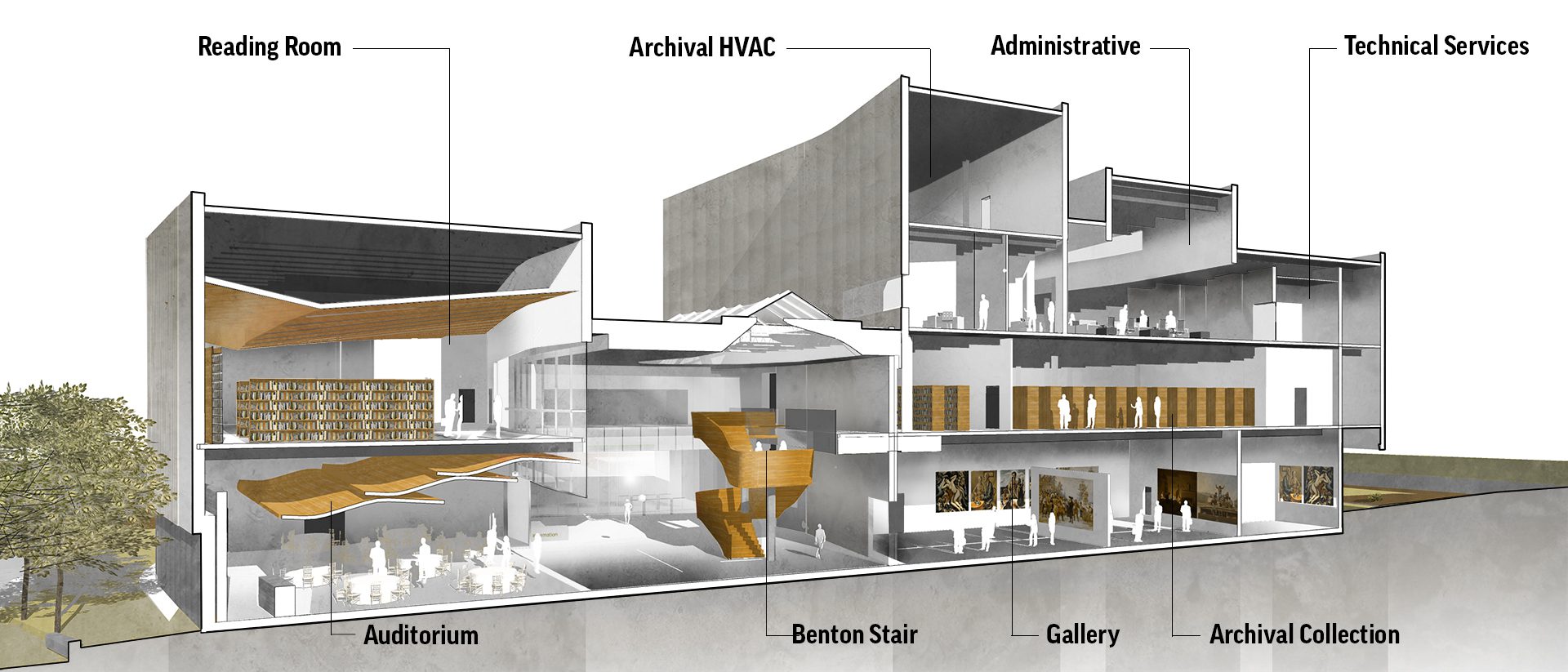
SHSMO’s Center for Missouri Studies rethinks how a library can engage with its community. It is a mixed media, multi-venue experience that connects an auditorium, event space, a reading room, archives, flexible exhibition galleries, classrooms, a café, a gift shop, and a bookstore. These varied indoor gathering spaces provide public engagement and dialogue venues and are visually connected to the main lobby and the park.
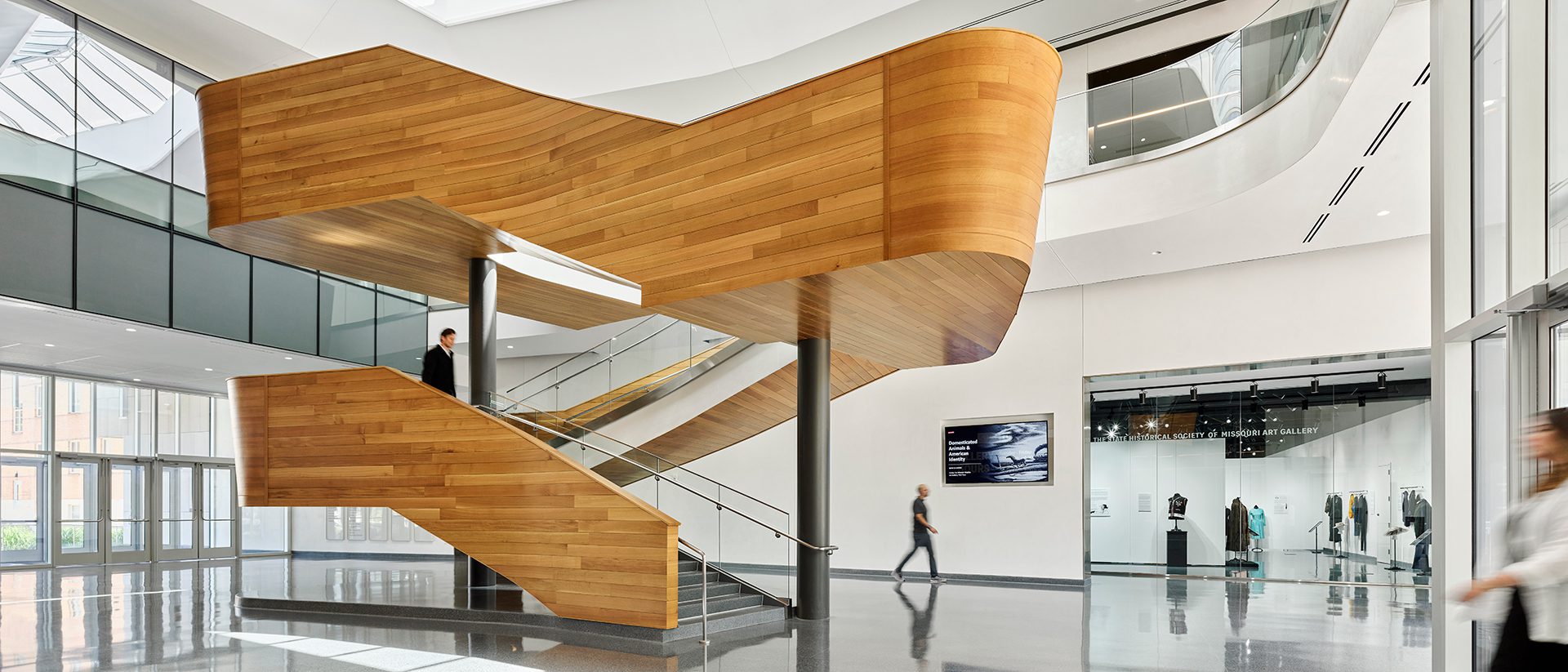
The entry lobby bridges the city and the University of Missouri campus. The lobby includes the Benton Stair, a monumental stair inspired by the writings and paintings of Missouri native Thomas Hart Benton and creates an aspirational visual anchor to the library.
The art gallery contains an extensive permanent collection of work by famed Missouri painter, muralist, printmaker, and writer, Thomas Hart Benton. Benton’s works are continually curated in concert with SHSMO’s programming. The gallery also contains works by Missouri native George Caleb Bingham. The voluminous nature of the collection creates multiple overlays to view society.
The Benton Stair cantilevers over the lobby. A lounge and meeting space overlooks the park and connects classrooms to the reading room on the adjacent podium. It can be used for casual gatherings or formal lectures and speeches. The curves of the stair and enclosed balustrade imitate the fluid brushstrokes of Benton’s work and reinforce the geometric forms common in the American realist modern art movement.
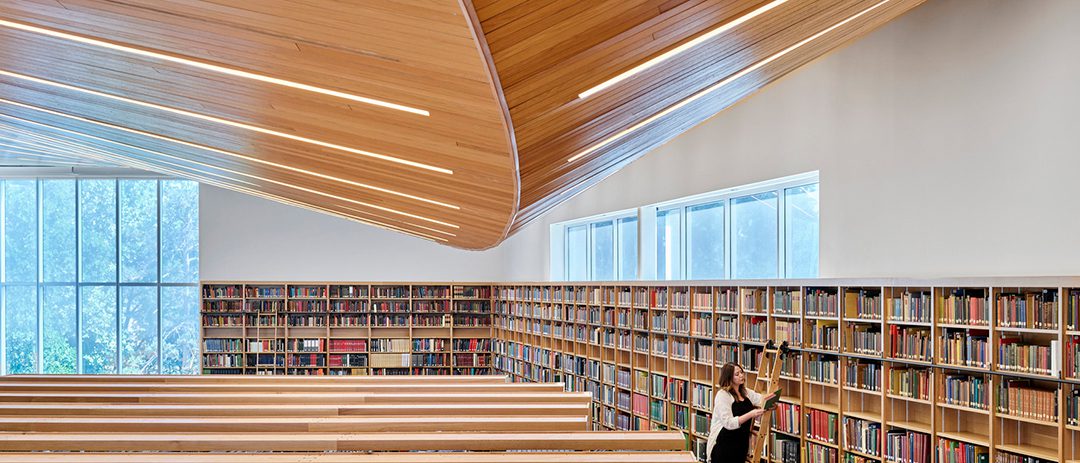
Originating as a place to preserve the state’s newspapers, today, the library includes one of the largest collections of state and local newspapers, manuscripts, photographs, rare books, oral histories, and maps. The historical collection mirrors an extensive contemporary collection of publications focusing on how history impacts our world today. The wood ceiling of the public collection’s reading room visually references the movement of the flowing Missouri River and the shape of riverboat bows.
The interiors were designed for human comfort and engagement with Red List Free materials, adjustable furnishings, and technologies. Locally-sourced white oak millwork reduces stress and increases visitors’ and scholars’ overall wellness.
Connection to Place
SHSMO is grounded in its place. The building’s form mimics the limestone masses cantilevering the Missouri and Mississippi Rivers, and the curvilinear fronts reference the swells of the two rivers merging. The exterior is clad in a locally sourced limestone called Ste. Genevieve marble, an oolitic limestone (or “marble”) found in Sainte Genevieve County, Missouri. By looking within the state, SHSMO contributed to local economies, mitigated the building’s carbon footprint by sourcing locally, and kept the tradition alive to build with this hardy product—Ste. Genevieve marble links new and old and creates continuity within Columbia, ultimately producing a building that shifts and blends with the urban fabric.
Having achieved LEED Gold and just a few points short of Platinum, the Center for Missouri Studies was designed to be future-proof. The high-performing enclosure is tested to last 100+ years, and a responsible glazing ratio was developed where skylights were introduced for better daylighting. The building’s form was designed so that its curves block the summer sun and exploit the winter sun. Surrounding the building is indigenous vegetation — deciduous trees and native flora. This landscaped edge captures rainwater runoff and absorbs moisture around the foundation, reducing drainage problems and keeping the building dry. Additionally, locally sourcing many of the building’s materials helped to reduce the project’s embodied carbon.
Exceedingly, this project and SHSMO’s mission mimicked our own rallying call— to collectively pursue possibilities. A constructive relationship with SHSMO, a network of engaged stakeholders, and a relentless curiosity from our multidisciplinary design team generated a landmark for the city of Columbia and Missouri. The Center for Missouri Studies now serves as the venue for discourse within Missouri on various topics—often contentious, and serves the greater community as a venue to look back so that the state might learn from its past.
To learn more about the State Historical Society of Missouri (SHSMO) and take a virtual tour of the Center for Missouri Studies, click here.
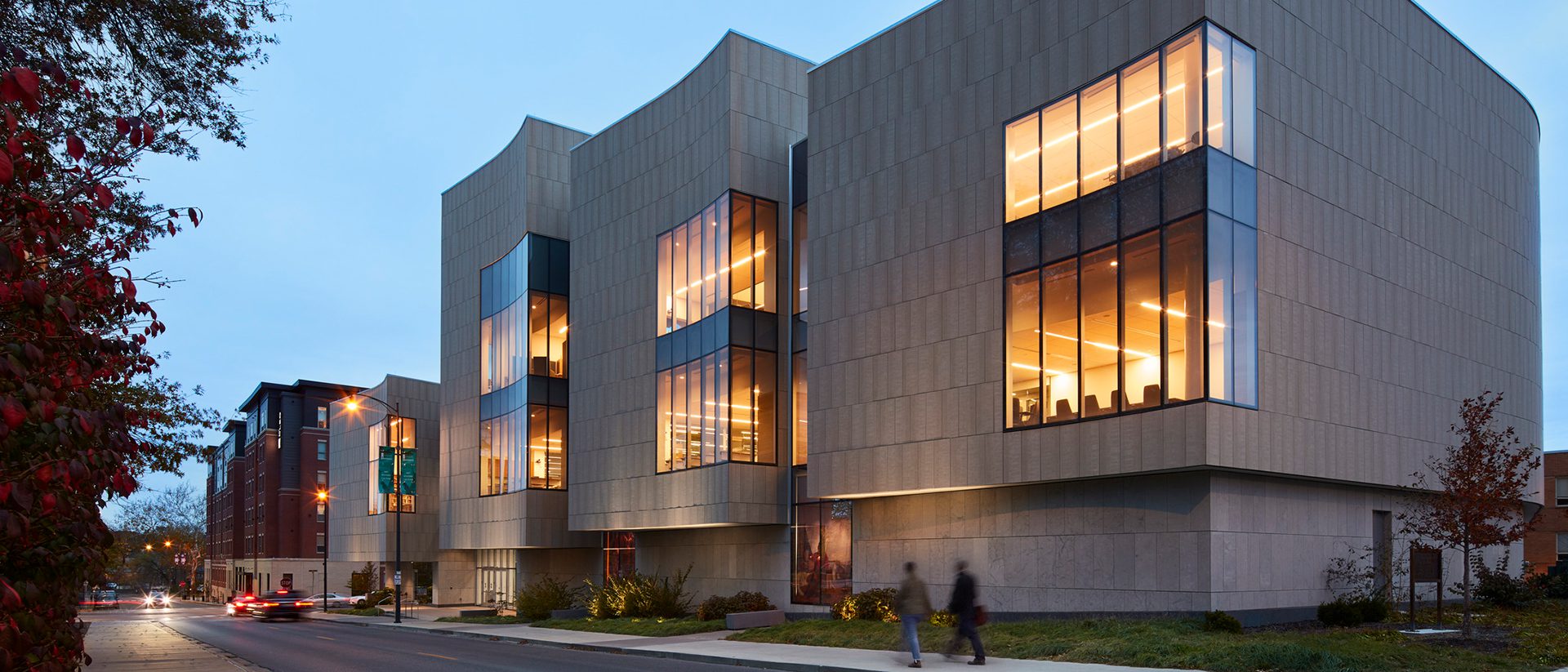
For me, it’s almost a sacred place. It's a place of contemplation and reflection, and research and understanding, and a place for people to come to grips with the question of what is Missouri and who are Missourians? And how have those answers changed over time?Gary Kremer Executive Director, The State Historical Society of Missouri
-
Location
Columbia, MO
-
Size
76,700 sq.ft.
-
Sustainable Design
LEED Gold
-
AIA Central States
Design Excellence Award
-
Association of General Contractors ‑ Missouri
Building Excellence Award ‑ Project of the Year
-
Client
State Historical Society of Missouri (SHSMO)
-
Photographer
Steve Hall
-
Photographer
Michael Robinson
